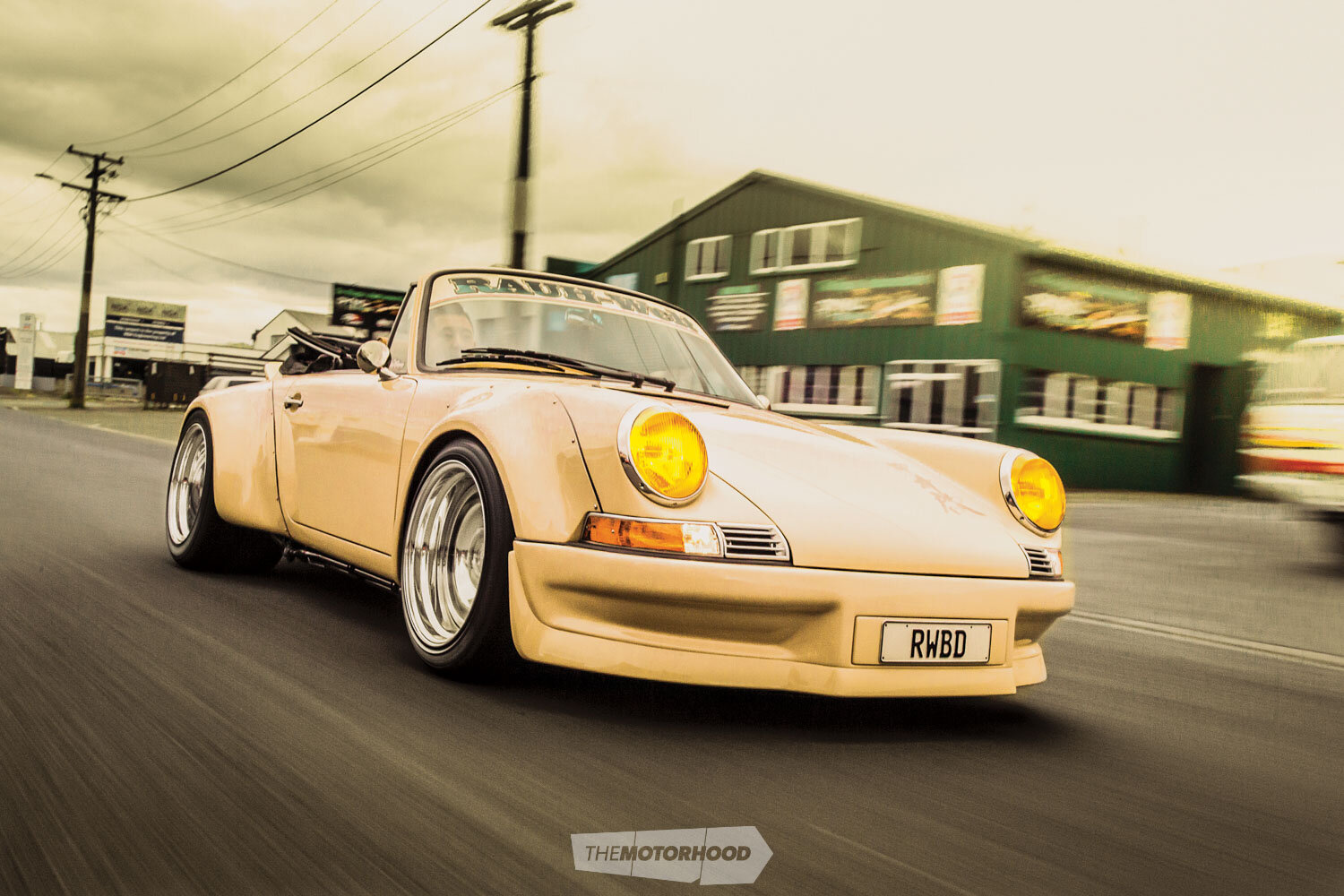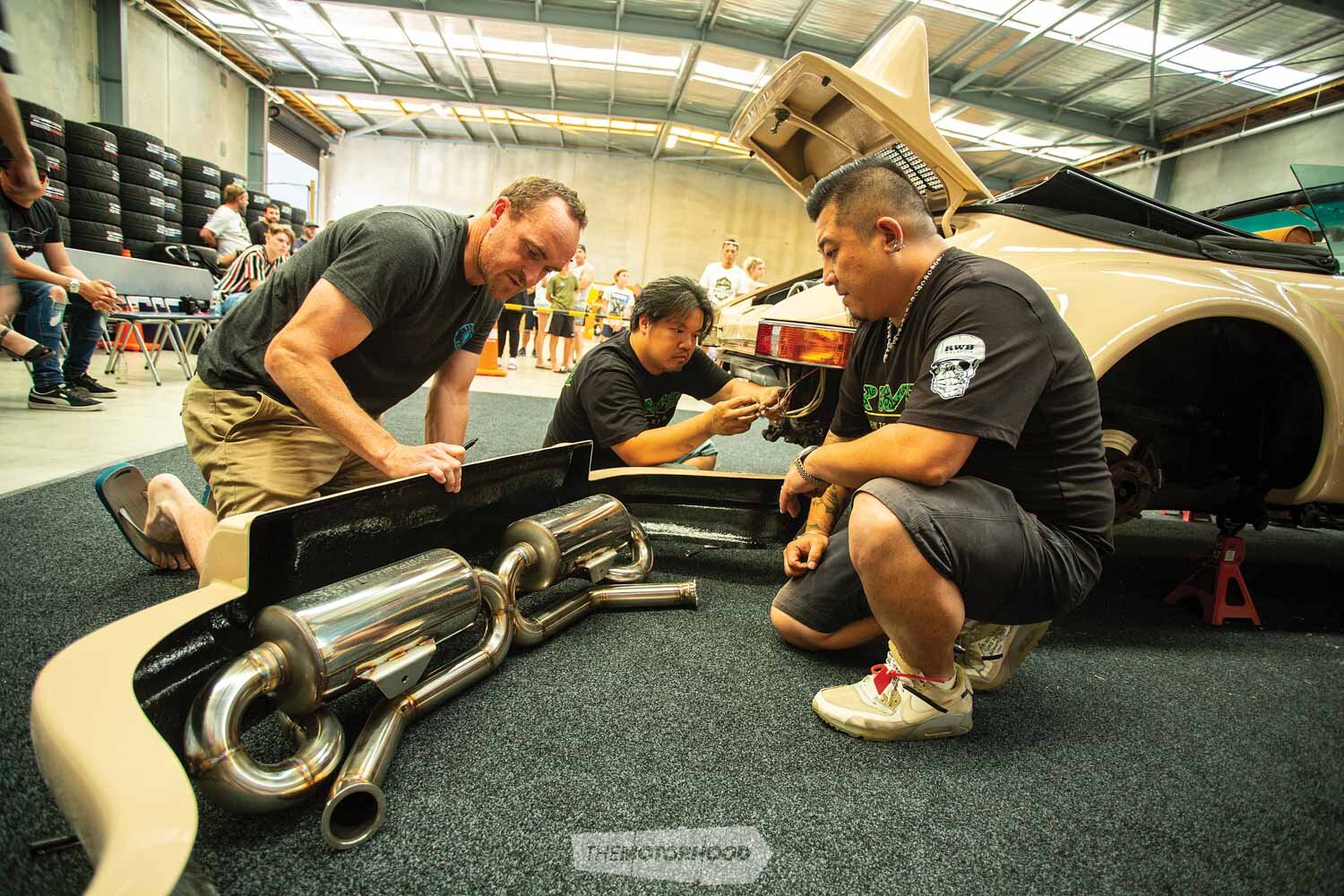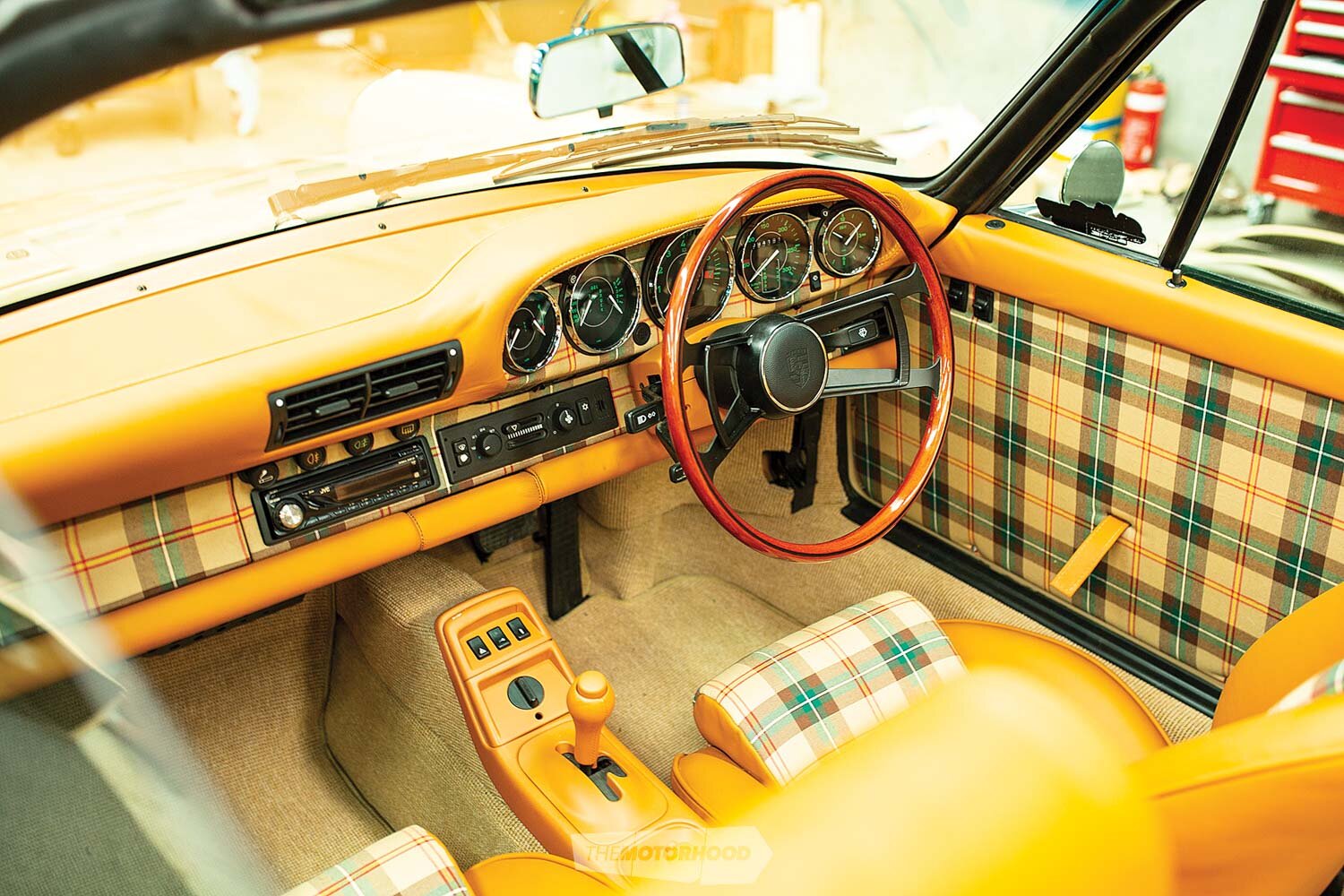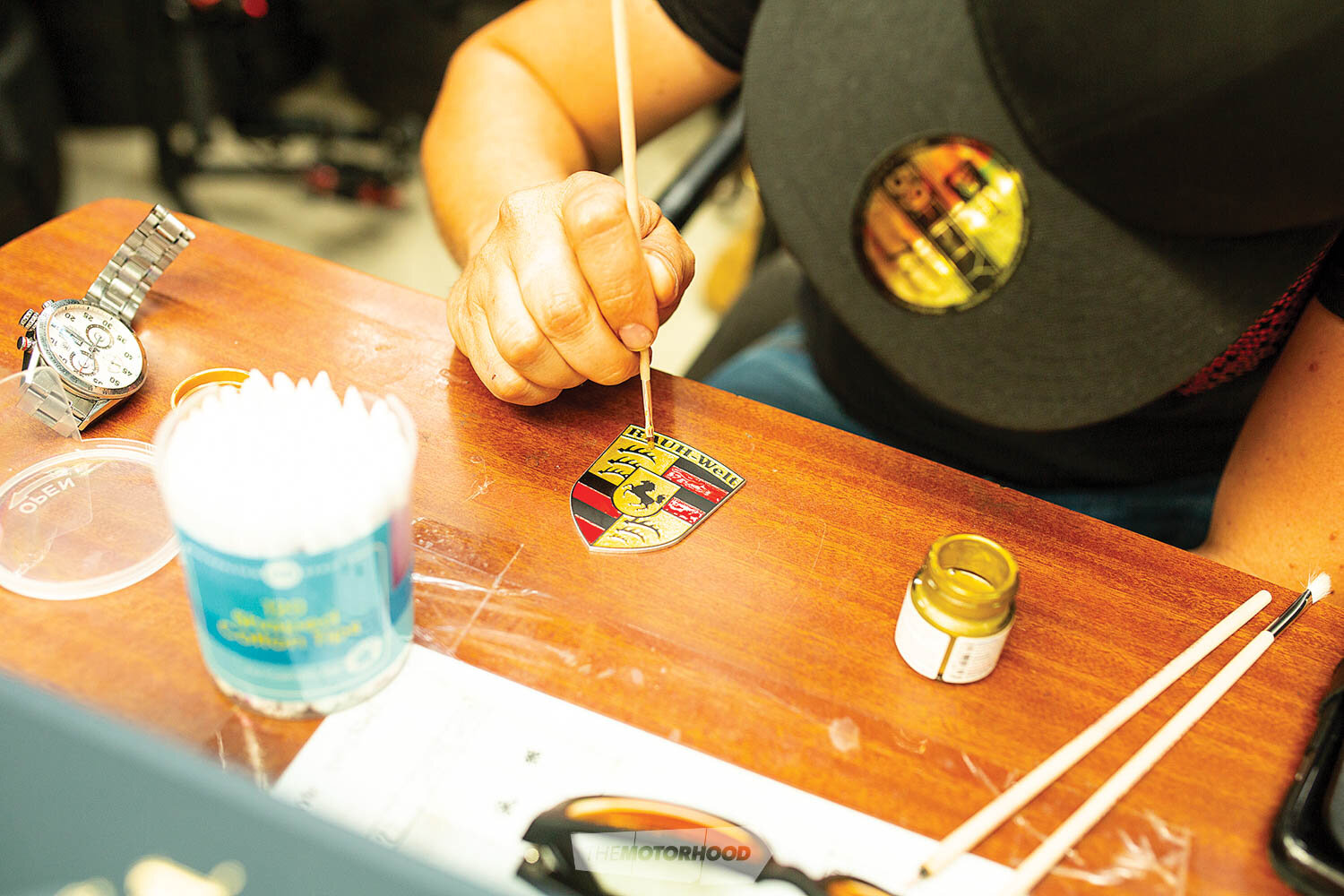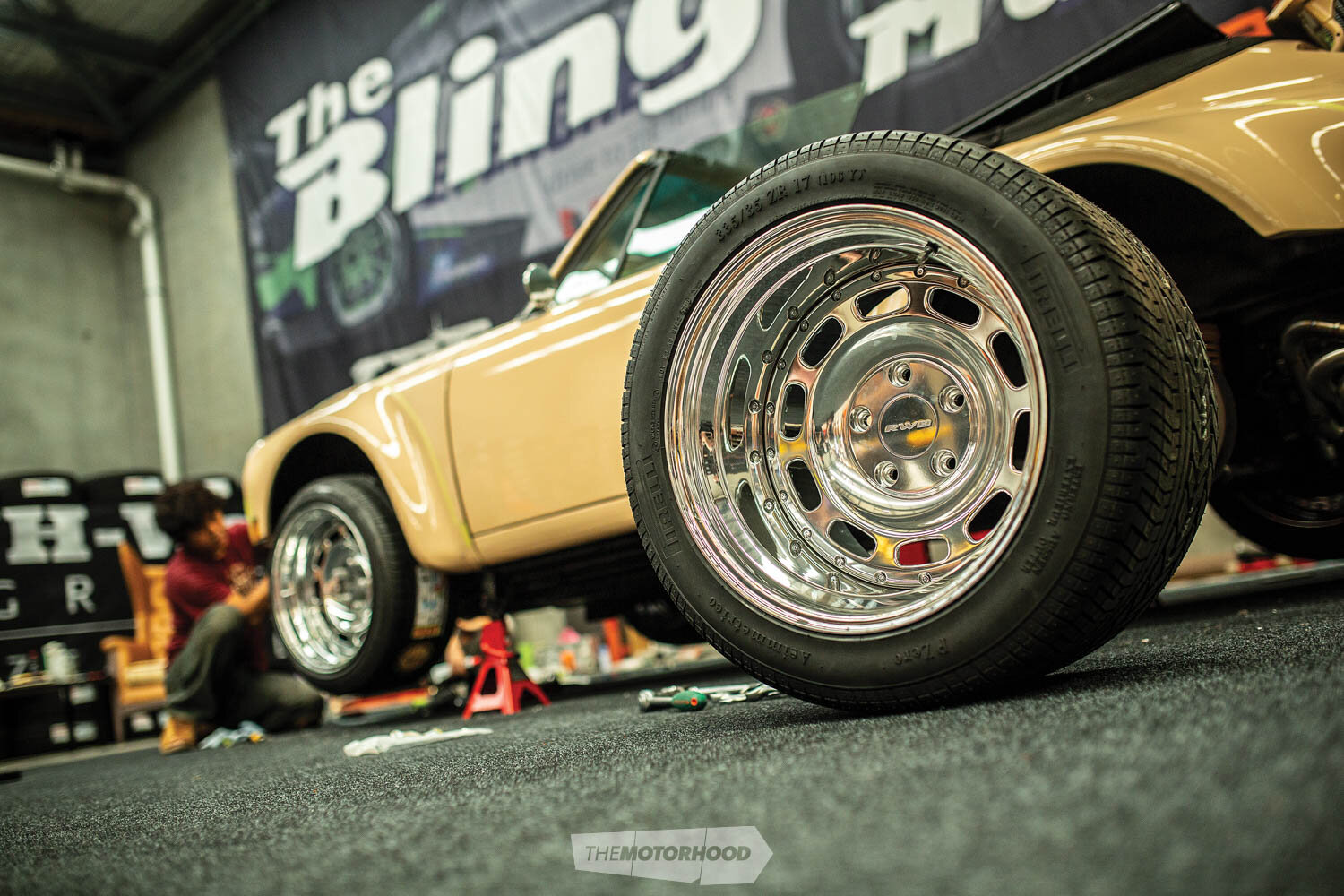For the third time on New Zealand shores, the RAUH-Welt name has been bestowed on an air-cooled Porsche 911, although this time the doors were flung wide open for all to witness and become part of the RWB story themselves
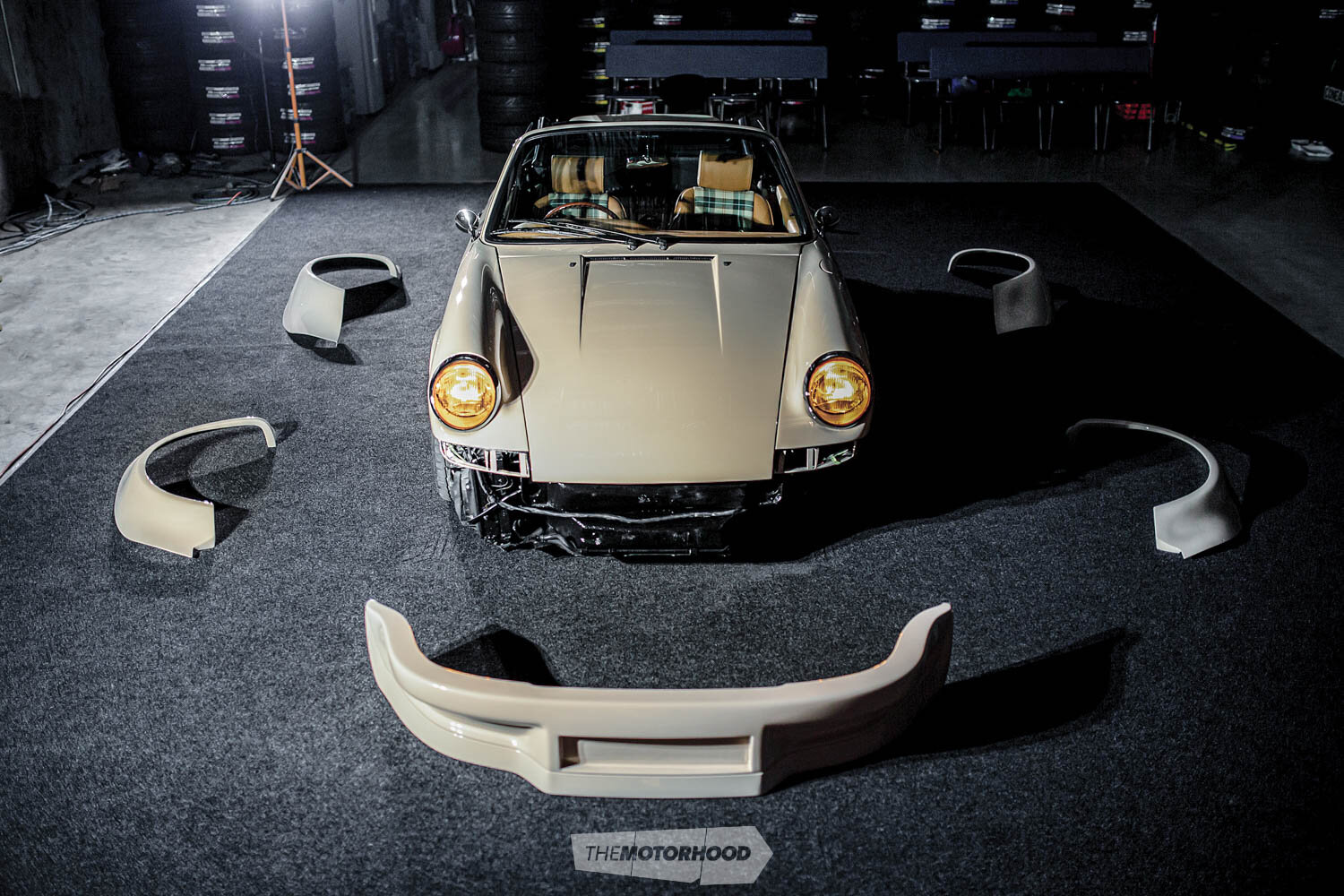
Within the linguistic space of our little automotive community, there’s an unassuming three-letter acronym. It simultaneously ignites heated debate and awakens passion and inspiration. Those three letters: RWB.
If you’ve pried open these pages, you probably know what RWB is all about. Standing for ‘RAUH-Welt Begriff’ (translated as ‘rough world concept’) it is the brainchild of one Japanese individual: Akira Nakai. In our world, Nakai-san is a superstar. Although the genesis of his craft is in the twin-cam scream of AE86s, it’s his signature modification of air-cooled Porsche 911s that’s escalated man and machine to cult status.
It’s a reputation forged over the past couple of decades or so, beginning with his own iconic matte-coated Porsche 911 (930 generation), christened ‘Stella Artois’ (all RWB cars are named) rolling out of his Kashiwa-based workshop. Some 330-plus cars have since received the Nakai-san touch, from Japan to all corners of the globe.
For some, the act of augmenting the timeless silhouette of a 911 with the trademark RWB wide fenders, hefty rollers, and skyscraping wings is tantamount to scribbling sunnies and a joint on the Mona Lisa. But for many others, RWB embodies the very ethos of modified car culture. Nakai-san’s creations transcend the aesthetic and mechanical. Each unique 911 represents a lifestyle, a tight-knit family unit and global network of passionate enthusiasts. It’s something that everyone seems to want to be a part of — be it through owning and driving or merely witnessing an RWB-fettled Porsche cruise past.

A few short years ago, New Zealand got its first taste of RWB magic. In an isolated Manawatu shed, Nakai-san unleashed both the ‘Waikato’ and ‘Hekigyoku’ Porsche 964s, commissioned by Anthony Wong and Nan Su, respectively. A private affair, the builds were open to close friends and family. Of course, both cars have since been shared widely with the community, appearing frequently at key events.
For Nan, airing out Hekigyoku in the shed simply whetted his appetite for 911s with big ol’ butts. Hence, the planning for ‘RWB NZ 003’ began. This time, the build process was to be shared with all comers, enabling anyone to become acquainted with Nakai-san’s RWB magic.
Number three began life as a 964 Cabriolet. When Nan acquired the drop-top, it already sported a later model 993 facelift. To the purist, this might be a deal-breaker; to a prospective RWB candidate — to this candidate — it was a no-brainer. See, for all the aggression and GT2-esque styling embodied by many RWBs, Nakai-san also offers a ‘backdate’ option.
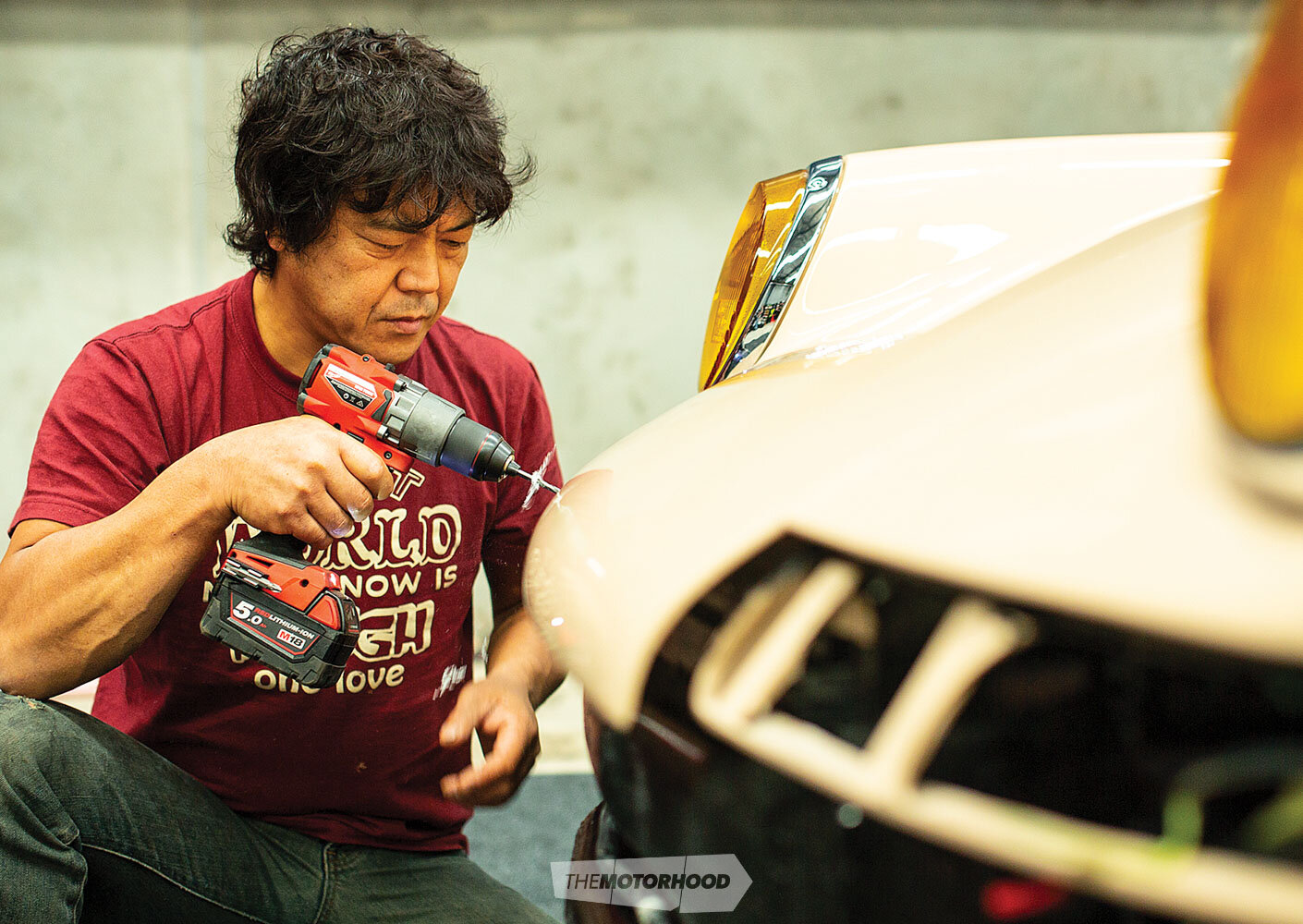
In Porsche-speak, that’s simply rolling back the styling to around 1973, swapping to the ‘long hood’ style of the period. With the early front end and tail lights in place, the RWB Backdate kit pulls in elements of the old RSR Motorsport styling.
When we rolled into The Bling Company’s partially emptied warehouse late on a Friday afternoon, the starting point of an RWB build appeared chaotic. Freshly coated in a custom cream tone, the 964 crouched over its standard wheels, stripped of front and rear bumpers. In fact, it was devoid of interior too, with Greg from Midnight Upholstery labouring over the newly trimmed, and very premium-looking, terracotta and plaid install. Luke from Porsche specialist LM Automotive was on hand to oversee the mechanical and electrical finishing touches before finally, at 5am on Saturday morning, the easel for Nakai-san’s paintbrush was taut and ready.
Lurking in the shadows, the custom three-piece wheels and RWB Backdate kit awaited unification with the unsuspecting Porker.
Nakai had arrived earlier that day, flying in from Tokyo and arriving in Auckland with his trademark tool case. A carbon-fibre roof panel, destined for Waikato, accompanied him. As we’ve come to expect, coffee and a cigarette were prioritized as Nakai-san and entourage emerged into the Kiwi sunlight.
On arrival to Hamilton, a po¯whiri welcomed the team — a challenge, ultimately culminating in mutual respect, setting the scene for the third Kiwi build.
The clocks moved forward to Saturday morning. Disembarking to a throng of admirers, and a sense of awe in the air, Nakai-san’s demeanour was such that even a casual onlooker could barely deny his presence. There was no mucking about; everything was straight to the point with minimal fluff — aside from indulgence in that aforementioned coffee and a cigarette while seated in the now-traditional wing-back chair. It was evident that he’s a man dedicated solely to task: the business of preserving and maintaining that RWB aura, which surrounds creator and machine.
Initially, Nakai-san spent time fitting up the Backdate turn signals and vents to the front arches. It’s a fussy procedure, requiring precision bracket adjustment, but soon enough they were installed. The growing throng of enthusiasts weren’t here to see these bits installed, however, and very soon the panel saw was plugged into the air line.
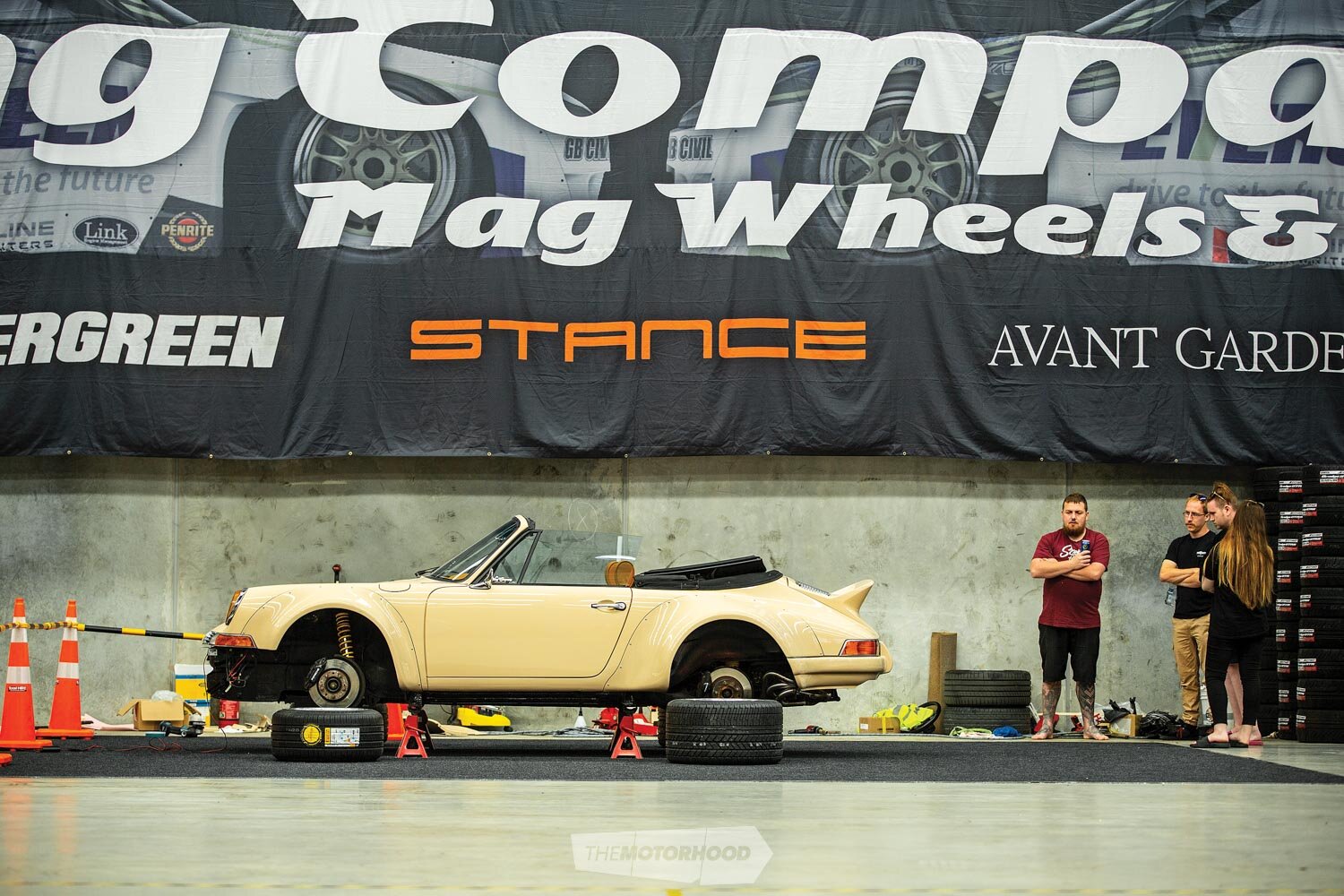
The fit of the over-fenders pays homage to RWB, mimicking the 911’s haunches perfectly. Nakai-san has evidently touched so many 911s by now that a simple mock-up — aided by temporary fasteners at each end — was enough to lay down a tape guideline, before he cut an even radius with the saw with nothing but visual guidance. While purists might have screamed ‘butchery’ as factory arches were cast aside, the assembled crowd clapped and cheered as the first piece of Stuttgart steel was detached.
It all unfolded impressively quickly, punctuated by brief cigarette breaks and a quick lunch. All the while, live music acts belted out a selection of favourites, enhancing the chilled vibe of the occasion.
With the cut lines dressed and all four fenders attached, RWB NZ 003 was moving closer to its final form — although not before the trademark application of Sikaflex sealant between fibreglass and sheet metal. It was theatre, really — a real-life performance of what we’ve seen in so many YouTube videos. The deft swipe of Nakai-san’s finger defined the transition from Porsche to RWB, laid bare by a flourish as the masking tape was pulled free. Another of the defining moments of the build. The custom three-piece wheels measuring 17×9.5-inch (-12) and 17×13 (-13) were bolted on, and the car lowered for a preliminary check, marking the conclusion of day one.
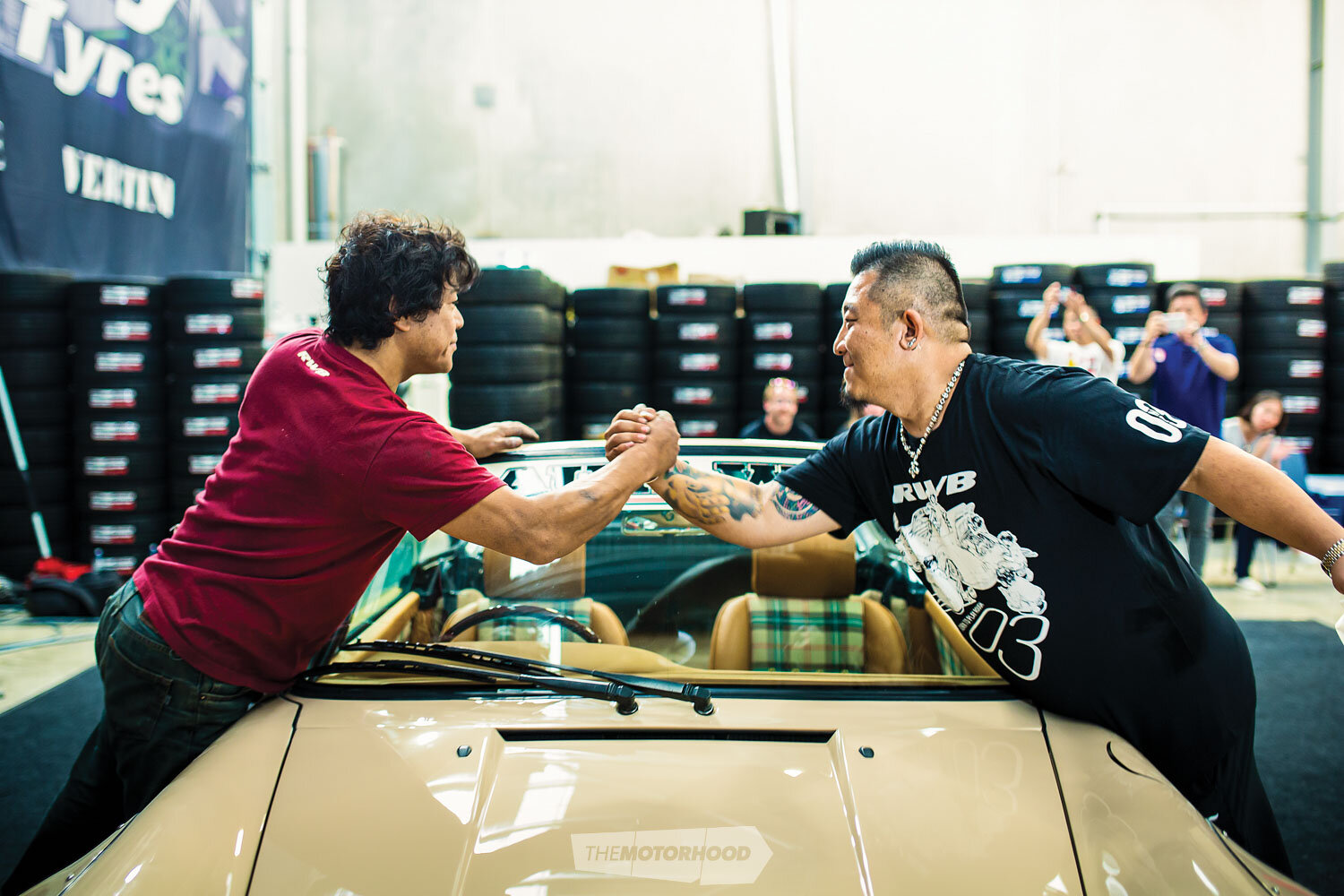
As Sunday morning dawned, the crowd thickened. Adding to the atmosphere, a convoy of Porsche owners arrived on the scene, among them an exquisite Singer 911, a recent commission, drawing its own share of acclaim.
Nakai, however, got straight into it — after the obligatory caffeine fix — fitting up the rear apron over the bespoke stainless exhaust system fabricated by TTT Auto Engineering. It wasn’t without a challenge, though; clearances proved tight!
The front fitted like a glove, however, bolting up to its mounting points and meeting the wheel arch with accuracy. Bodywork-wise, No. 003 was done save for the addition of some weatherstripping between each bumper and the panel work. It’s the little details that count, a fact that’s not lost on Nakai-san, as he proceeded to eye up the stance of the 911, adjusting the suspension and alignment until it was just so.
A mere day-and-a-half after Nakai-san strolled through the door, the belt sander and panel saw were laid at rest. The crowd, the friends, and family present bore witness to the traditional handover. As Nan peeled off the windscreen-banner backing, creator and owner shared a knowing glance, a smile, and a handshake of solidarity. Of course, the drop-top needed a name: ‘Asher’, after Nan’s son.
What we witnessed was RWB. Three simple letters, powerful enough to unite, to make those present feel like they’d been part of something properly special.
